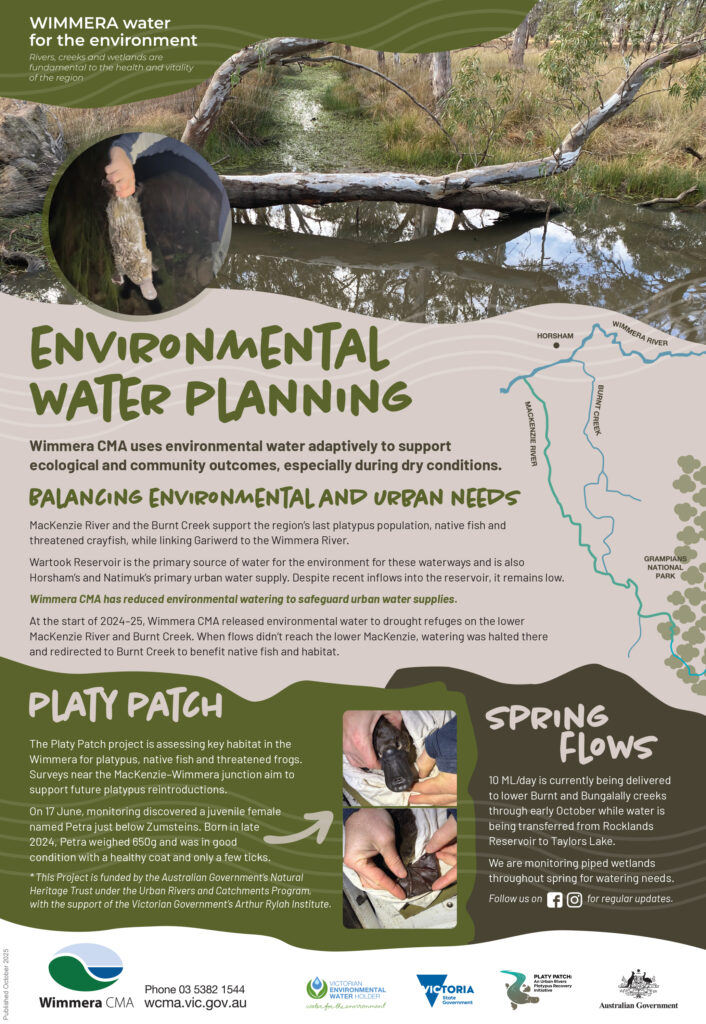WIMMERA water for the environment: SPRING
Environmental water planning
Wimmera CMA uses environmental water adaptively to support ecological and community outcomes, especially during dry conditions.
Balancing environmental and urban needs
MacKenzie River and the Burnt Creek support the region’s last platypus population, native fish and threatened crayfish, while linking Gariwerd to the Wimmera River.
Wartook Reservoir is the primary source of water for the environment for these waterways and is also Horsham’s and Natimuk primary urban water supply. Despite recent inflows into the reservoir, it remains low.
Wimmera CMA has reduced environmental watering to safeguard urban water supplies.
At the start of 2024–25, Wimmera CMA released environmental water to drought refuges on the lower MacKenzie River and Burnt Creek. When flows didn’t reach the lower MacKenzie, watering was halted there and redirected to Burnt Creek to benefit native fish and habitat.
Platy Patch
The Platy Patch project, backed by state and federal funding, is assessing key habitat in the Wimmera catchment for platypus, native fish and threatened frogs. Surveys near the MacKenzie–Wimmera junction aim to support future platypus reintroductions.
On 17 June, monitoring discovered a juvenile female named Petra just below Zumsteins. Born in late 2024, Petra weighed 650g and was in good condition with a healthy coat and only a few ticks.
Spring flows
10 ML/day is currently being delivered to lower Burnt and Bungalally Creeks through early October while water is being transferred from Rocklands Reservoir to Taylors Lake.
We are monitoring piped wetlands throughout spring for watering needs.





